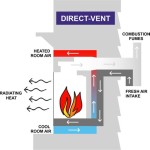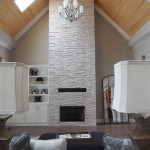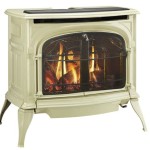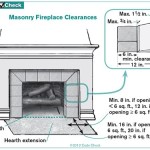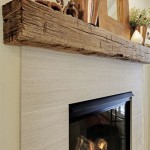What To Do If Pilot Light Goes Out On Gas Fireplace
A gas fireplace offers ambiance and warmth, particularly during colder months. However, one common issue homeowners encounter is the pilot light extinguishing. This article provides a comprehensive guide on troubleshooting and resolving a pilot light outage in a gas fireplace.
The pilot light is a small, continuous flame that serves as an ignition source for the main burner of the fireplace. When the pilot light is lit, it heats a thermocouple (or thermopile in some models), which generates a small electrical current. This current opens a valve, allowing gas to flow to the main burner when the fireplace is activated. If the pilot light goes out, the thermocouple cools, the valve closes, and the main burner cannot ignite, rendering the fireplace unusable.
Attempting to relight the pilot light without understanding the underlying cause can be dangerous. Gas leaks can accumulate, potentially leading to explosions or carbon monoxide poisoning. Therefore, establishing the reason for the pilot light extinguishing is crucial before any relighting attempts.
Identifying Potential Causes of a Pilot Light Outage
Several factors can contribute to a pilot light extinguishing in a gas fireplace. Understanding these potential causes is the first step towards resolving the problem.
Drafts: One of the most common reasons for a pilot light to go out is a draft. Strong winds or negative pressure within the home can disrupt the small flame and extinguish it. This is particularly common in older homes or those with poorly sealed windows and doors. Opening a nearby window slightly can sometimes alleviate negative pressure and allow the pilot light to remain lit.
Dirty Pilot Light Assembly: Over time, dust, debris, and soot can accumulate around the pilot light assembly, obstructing the gas flow and causing the flame to become weak or unstable. This can lead to the pilot light extinguishing sporadically. Regular cleaning and maintenance of the pilot light assembly are essential for preventing this issue.
Thermocouple Failure: The thermocouple is a safety device that senses the presence of the pilot light flame. If the thermocouple is faulty or weakened, it may not generate enough electrical current to keep the gas valve open, even when the pilot light is lit. A malfunctioning thermocouple is a common cause of pilot light problems and often requires replacement.
Gas Supply Issues: Problems with the gas supply can also cause the pilot light to extinguish. Low gas pressure, a tripped gas meter shut-off, or a problem with the main gas line to the house can all interrupt the gas flow to the fireplace, causing the pilot light to go out. Checking other gas appliances in the home, such as the stove or furnace, can help determine if there is a broader gas supply issue.
Faulty Gas Valve: The gas valve controls the flow of gas to both the pilot light and the main burner. If the gas valve is malfunctioning, it may not properly regulate the gas flow to the pilot light, causing it to extinguish. A faulty gas valve typically requires professional repair or replacement.
Ventilation Problems: Inadequate ventilation can lead to a build-up of combustion byproducts, which can interfere with the pilot light flame and cause it to go out. Ensuring the fireplace is properly vented according to manufacturer specifications is essential for safe and reliable operation.
Spider Webs or Insect Nests: Small openings in the gas lines or around the pilot light assembly can attract spiders and other insects, which may build nests that obstruct the gas flow. Regularly inspecting and cleaning these areas can prevent this issue.
Troubleshooting and Relighting the Pilot Light
Before attempting to relight the pilot light, ensure the area is well-ventilated. Open windows and doors to dissipate any accumulated gas. If a strong smell of gas is present, evacuate the premises immediately and contact the gas company or a qualified HVAC technician.
Safety First: Before beginning any troubleshooting steps, turn off the gas supply to the fireplace. This is typically done by locating the gas shut-off valve near the fireplace or on the gas line leading to it. Turn the valve to the "off" position. Allow several minutes for any residual gas to dissipate before proceeding.
Cleaning the Pilot Light Assembly: Use a small brush or vacuum cleaner with a soft brush attachment to remove any dust, debris, or soot from the pilot light assembly. Pay close attention to the small opening where the gas flows out. A can of compressed air can also be used to dislodge stubborn debris. After cleaning, turn the gas supply back on and attempt to relight the pilot light.
Checking the Thermocouple: Visually inspect the thermocouple for any signs of damage, such as corrosion or cracks. If the thermocouple appears damaged, it should be replaced. To test the thermocouple, a multimeter can be used to measure the voltage output. A healthy thermocouple should produce a voltage within the manufacturer's specified range. If the voltage is low or non-existent, the thermocouple needs to be replaced.
Relighting Procedure: Locate the pilot light control knob. This knob typically has three positions: "Off," "Pilot," and "On." Turn the knob to the "Off" position and wait for a few minutes to allow any remaining gas to dissipate. Then, turn the knob to the "Pilot" position. While holding the knob in the "Pilot" position, press the igniter button. This button creates a spark that should ignite the pilot light. Continue holding the knob in the "Pilot" position for about 20-30 seconds after the pilot light ignites. This allows the thermocouple to heat up and generate enough current to keep the gas valve open. If the pilot light stays lit after releasing the knob, turn the knob to the "On" position to activate the main burner. If the pilot light goes out when the knob is released, repeat the relighting procedure, holding the knob in the "Pilot" position for a longer period. If the pilot light continues to extinguish, there may be a problem with the thermocouple or the gas valve.
Checking the Gas Supply: Confirm that the gas supply to the fireplace is turned on. Check the position of the gas shut-off valve near the fireplace and ensure it is in the "on" position. Also, check other gas appliances in the home to see if they are functioning properly. If there is a widespread gas outage, contact the gas company for assistance.
When to Call a Professional
While some pilot light issues can be resolved with basic troubleshooting, certain situations require professional assistance. Attempting to repair complex gas fireplace components without proper training can be dangerous and may void the manufacturer's warranty. Calling a qualified technician is often the safest and most effective course of action.
Persistent Pilot Light Outages: If the pilot light continues to extinguish despite repeated attempts to relight it, there is likely an underlying issue that requires professional diagnosis. A technician can identify and repair problems with the gas valve, thermocouple, or other components.
Gas Leaks: If a strong smell of gas is present, do not attempt to relight the pilot light. Evacuate the premises immediately and contact the gas company or a qualified HVAC technician. Gas leaks are a serious safety hazard and should be addressed promptly by a trained professional.
Complex Repairs: Repairs involving the gas valve, main burner, or other complex components should be performed by a qualified technician. These components require specialized knowledge and tools to repair safely and effectively.
Uncertainty: If unsure about the cause of the pilot light outage or how to proceed with repairs, it is always best to err on the side of caution and call a professional. A trained technician can accurately diagnose the problem and perform the necessary repairs to ensure the fireplace operates safely and reliably.
Regular maintenance, including cleaning the pilot light assembly and inspecting the thermocouple, can help prevent pilot light outages and extend the life of the gas fireplace. Consulting the manufacturer's instructions and adhering to recommended maintenance schedules is crucial for safe and efficient operation. Ignorance of the underlying cause and haphazard resolution attempts can lead to more serious fireplace malfunctions and safety risks.

Gas Fireplace Won T Stay Lit Magic Touch Mechanical

Why Your Pilot Light Keeps Going Out How To Fix With S

How To Relight A Millivolt Valve Gas Fireplace Pilot Light Tophat Pro

Gas Fireplace Keeps Shutting Off Here S What You Can Do

Gas Fireplace Keeps Shutting Off Here S What You Can Do
My Gas Fireplace Pilot Light Works Perfectly However When I Flip The Switch For Rest Of To Turn On Nothing Happens What Quora

How To Fix A Gas Fireplace Pilot Light That Does Not Stay Lit Troubleshooting And Repairing

What Causes A Pilot Light To Go Out

Simple Diy Fix Fireplace Pilot Light Won T Stay Lit How To It Napoleon Goes Out

What To Do When Your Gas Furnace Pilot Light Won T Stay Lit Wilson Oil Propane
Related Posts


